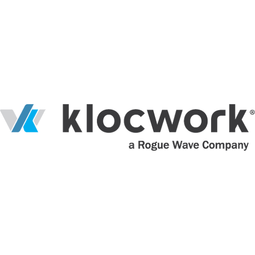
Technology Category
- Infrastructure as a Service (IaaS) - Cloud Computing
- Platform as a Service (PaaS) - Application Development Platforms
Applicable Industries
- Equipment & Machinery
- Retail
Applicable Functions
- Product Research & Development
Use Cases
- Retail Store Automation
Services
- System Integration
The Customer
Ubisoft
About The Customer
Ubisoft is a global leader in the production, publishing, and distribution of interactive entertainment products. With over 1,000 titles, its games are distributed in more than 50 countries. The company's 15 in-house production studios are located in 11 countries. Ubisoft's Montreal studio employs 1,600 staff members, and the company plans to grow that number to more than 3,000 people by 2013. This will make the Montreal studio one of the world's largest creative powerhouses and the driving force behind the conception and development of console and PC video games. Brands include Prince of Persia®, Assassin's Creed™, Rayman®, Tom Clancy's Splinter Cell®, and Tom Clancy's Rainbow Six®.
The Challenge
Ubisoft, a leading producer, publisher, and distributor of interactive entertainment products worldwide, faced a significant challenge in managing its game development process. The company operates with each game development run as a separate entity, with teams ranging from 15 to over 150 developers. Each team is responsible for its tools and engine and has its own Helix Core server. The company's aim was to share tools and game engines across a range of game platforms, minimizing platform-specific changes needed in the final versions of production data. However, one of the main challenges was improving the sharing of tools between the development teams and enhancing productivity with new tools and processes.
The Solution
Ubisoft has been using Helix Core as its main source control tool for over six years. More than 1,200 developers in the Montreal studio use Helix Core to store source code and digital assets, including graphics and animation files, modeling, textures, and sound and video footage. Artists and modelers use the Helix Visual Client and its associated graphical tools to track even the smallest of changes submitted each day. The Helix Core Plug-in for Graphical Tools allows them to interact easily with Helix Core from within Photoshop and 3ds Max. Ubisoft also uses Helix Core changelists to group code changes in logical units before they are submitted, enabling programmers to easily select what they want to work on and switch between separate tasks more readily. The Helix Core branching mechanism is ideal for sharing the same code across different target game platforms.
Operational Impact
Quantitative Benefit

Case Study missing?
Start adding your own!
Register with your work email and create a new case study profile for your business.
Related Case Studies.

Case Study
Smart Water Filtration Systems
Before working with Ayla Networks, Ozner was already using cloud connectivity to identify and solve water-filtration system malfunctions as well as to monitor filter cartridges for replacements.But, in June 2015, Ozner executives talked with Ayla about how the company might further improve its water systems with IoT technology. They liked what they heard from Ayla, but the executives needed to be sure that Ayla’s Agile IoT Platform provided the security and reliability Ozner required.

Case Study
IoT enabled Fleet Management with MindSphere
In view of growing competition, Gämmerler had a strong need to remain competitive via process optimization, reliability and gentle handling of printed products, even at highest press speeds. In addition, a digitalization initiative also included developing a key differentiation via data-driven services offers.

Case Study
Predictive Maintenance for Industrial Chillers
For global leaders in the industrial chiller manufacturing, reliability of the entire production process is of the utmost importance. Chillers are refrigeration systems that produce ice water to provide cooling for a process or industrial application. One of those leaders sought a way to respond to asset performance issues, even before they occur. The intelligence to guarantee maximum reliability of cooling devices is embedded (pre-alarming). A pre-alarming phase means that the cooling device still works, but symptoms may appear, telling manufacturers that a failure is likely to occur in the near future. Chillers who are not internet connected at that moment, provide little insight in this pre-alarming phase.

Case Study
Premium Appliance Producer Innovates with Internet of Everything
Sub-Zero faced the largest product launch in the company’s history:It wanted to launch 60 new products as scheduled while simultaneously opening a new “greenfield” production facility, yet still adhering to stringent quality requirements and manage issues from new supply-chain partners. A the same time, it wanted to increase staff productivity time and collaboration while reducing travel and costs.

Case Study
Integration of PLC with IoT for Bosch Rexroth
The application arises from the need to monitor and anticipate the problems of one or more machines managed by a PLC. These problems, often resulting from the accumulation over time of small discrepancies, require, when they occur, ex post technical operations maintenance.

Case Study
Data Gathering Solution for Joy Global
Joy Global's existing business processes required customers to work through an unstable legacy system to collect mass volumes of data. With inadequate processes and tools, field level analytics were not sufficient to properly inform business decisions.







